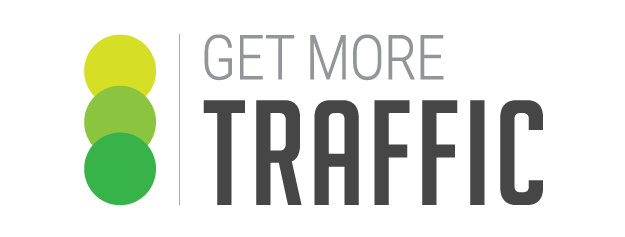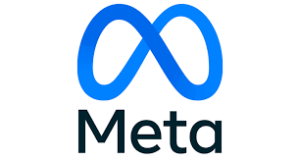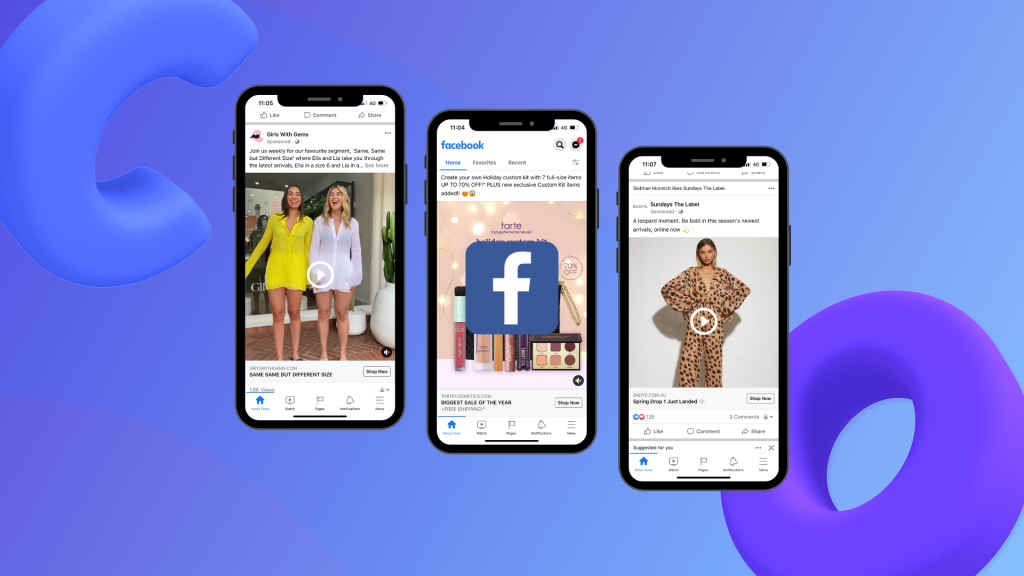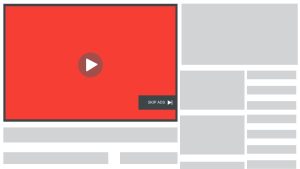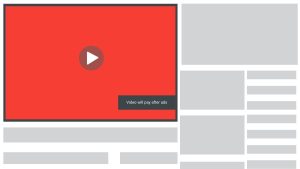Why You Shouldn’t Pause Your Ads Over Christmas
You might think there isn’t much of a point in keeping your Google Smart Shopping ads running over Christmas, but pausing them could have catastrophic impacts on your business. Okay, so maybe it’s not that bad; your business isn’t going to collapse, but pausing your ads really can have adverse effects on your brand, forcing you to put in more hard yards than is necessary to climb back up the Google search ranking ladder. Not really sure how it all works? Not to worry, because our digital marketing experts at Get More Traffic have collated a bunch of information to help you further understand the importance of keeping your Google shopping strategy up and running over the Christmas period.
GMT’s Hot Tips For Running Your Google Smart Shopping Strategy Over Christmas
Christmas is nearly here, and if you haven’t already figured out how your ads will run over the holidays, don’t stress because there is still time. Below is a list of our hottest Google Shopping management tips to help you overtake the competition this Christmas. We recommend:
- Regularly reviewing your bids. Not only should you be bidding aggressively these holidays, but it’s crucial to review your bids on a regular basis to ensure you remain above your competition.
- Prioritising high-value products. According to Google, high-value products that appear in the top search results receive up to 3 times the shopper engagement.
- Research your competitors. Do your best to understand your competition’s ad campaigns and adjust your own accordingly.
- The earlier, the better. For higher traffic and sales volumes, it’s better to begin planning your Google Smart Shopping as soon as possible.
- Automating your ad placement. This will help you remain consistent and competitive, potentially increasing conversions and leads.
- Prepare your budget early. This will allow you to align your budget with expected sales, meaning there will be no need to hit the brakes on your shopping ads.
Benefits Of Keeping Your Shopping Ads Running During The Holiday Period
If you’re here, you’re likely considering pausing your shopping ads over Christmas. We’re experts in digital marketing, and we’re here to tell you to stop right there. You might think bringing your ads to a temporary halt is the best option, but in reality, running your campaign throughout the holiday period will be super beneficial to your business. Running shopping ads over the holidays means:
- There is a reduced bid for keywords. Those of your competitors who have decided to pause their ads will likely hinder their Google ranking. This allows you to rank higher for chosen keywords.
- You will attract more last-minute shoppers. Not everyone can have their Christmas gifts sorted in October. Attract last-minute shoppers by keeping your ads active over the holidays.
- Your business will be exposed to more consumers. Most people take a break from work over Christmas. This means they have more time for scrolling and large Christmas bonuses for spending.
- Revenue. You might think pausing ads will save you money, but in the long term keeping your Google Smart Shopping ads active over Christmas affords you the opportunity for increased revenue. So spend now to save later. That’s our motto.
- Increased traffic to your site. This is especially effective for tradies who are working over Christmas. Running your ads will allow you to be among the top search results, allowing exposure to more consumers and increasing sales/business.
- Spending increases. People spend more this time of year, that’s just a fact! So it wouldn’t make sense to bury your company during the gifting period.
- ‘Tis the season for new year’s resolutions. Specifically great for fitness and wellbeing businesses, running ads over Christmas can really play into consumers’ new year’s ideals.
- Boxing day sales! Why would people shop around when they can get a great deal at their fingertips? Keep your ads up and running to stay ahead of the game.
What You Stand To Lose If You Pause Your Shopping Ads Over Christmas
We’ve talked about the benefits of keeping your campaign running this holiday season. But what we haven’t touched on is how pausing your ads might hinder your brand in the long run. What we mean by that is:
- Higher bids after reactivation. Returning to ads after Christmas means you’ll have to bid even higher when you return. This takes time, increases costs and uses unnecessary resources that could be more effectively utilised elsewhere.
- You’ll miss out on valuable traffic. Not appearing among the top Google results means you miss out on valuable leads and conversions.
- Your rankings will suffer. Those who keep their ads running surpass those businesses that don’t. This is because Google thinks you are no longer active and prioritises businesses that are still campaigning.
If You’re Looking For A Premium Digital Marketing Company To Help Drive Your Sales, Get More Traffic Can Help
Is your website a highway at peak hour? Because boy, you’ll be getting a lot of traffic with the help of our digital marketing experts. We’re passionate about helping businesses all over Australia harness the power of Google Smart Shopping to take their sales to the next level. If you’re ready to give traffic to your website the green light and learn how to optimise your Google Shopping feed, contact the team at Get More Traffic today!
October Digital Marketing Industry Updates
Google Updating Mobile Search Results Experience
Google’s search results pages for mobile are undergoing a massive shift. Google recently announced that they are introducing continuous scrolling for mobile search, so that instead of clicking through to the next page, or “See more results”, the behaviour is more likely to mimic how users experience scrolling through social media feeds. The news has gotten mixed reactions across the industry. However, the continuous scroll might prove beneficial for businesses. For one, it should allow users to continue to scroll through and find relevant content that may not immediately be among the results displayed at the top. Expect this change to continue to be rolled out in the coming weeks.
Changes Being Made to Facebook Ad Objectives
Facebook is making some changes to the current ad objectives present in Ads Manager. All ad objectives are now being grouped into six new objectives as a way to better communicate and collate similar ad objectives. The six new objectives include awareness, traffic, engagement, leads, sales, and app promotion. Facebook has mentioned that there will not be any changes made in terms of reporting of results, and any campaigns that are still currently running will remain active and won’t require any changes. It would be keen, however, for advertisers to familiarise themselves with the new schematics of Facebook’s ad objectives.
Professional Profiles Coming to Twitter!
They might have been a long time coming, however Professional Profiles are finally coming to Twitter. Beta testing started back in April, wherein Twitter invited a handful of businesses and creators to participate. Recently, they’ve opened up the Personal Profiles to more businesses. To apply for a Professional Profile, simply click through this link. The Professional Profile will display three modules: The About Module, which has your business and contact information, as well as hours of operation; the Shop Module, which will allow Twitter users to purchase on the platform; and the Newsletter Module, which can serve as a distribution channel for businesses on latest news and updates. Take note, though, that once accepted manually editing your profile is not readily available. Should you wish to make any changes, you will have to resubmit the application.
Advertiser Identity Verification Policy Updates on Google
To further improve the quality of advertising on its network, Google is updating their Advertiser Identity Verification Policy. The new policy won’t have a massive effect on advertisers except that they should expect to receive an email in the coming days regarding this. The verification process should be accomplished within 30 days, after which Google will pause all running campaigns until after completion. This change will allow Google to publicly disclose business information such as advertiser name change history, contact information, ad creatives, ads removed, accounts suspended, and the dates and locations that ads are being served.
Two Main Things You Need to Make Your eCommerce Site Convert
The global eCommerce market is growing, mainly due to the events of the past year, as well as the increased usage of smartphones and tablets. In fact, this 2021 it’s expected to total $4.81 trillion, wherein $3.56 trillion of which is projected to come from mobile eCommerce sales.
That said, it’s becoming increasingly important to make sure that your website is always optimised to generate conversions and sales. For those of you who have already started an eCommerce business, you’re probably already wondering what you can do to improve your current state and take advantage of the changes in the marketplace?
There are two main things you want to ensure that you’re making the most out of your eCommerce website:
Make Sure You’re Getting Relevant Traffic
One way to make sure that your budget is being spent to find potential customers searching for your products is to apply a keyword strategy and account structure that will ensure that you’re getting the right kind of traffic. Here, working with a Google Ads professional is important if you’re not sure how to go about setting it up on your Google Ads account.
Making sure that you’re attracting the right people is critical, especially if your goal is to increase conversions and sales on your website.
If your business is in the industry of health and wellness, for example, you want to avoid targeting general keywords. Be as specific as you can about your products and services, whether that’s cross fit training, bikram yoga sessions, organic produce, or essential oils, it’s important that your keywords are hitting the right note.
Apply the same specificity to your copy. Whether you’re running Google Display Ads or Facebook and Instagram Ads, your captions and copy should be engaging, targeted, and relevant with a clear call-to-action.
Optimise Your Website for Conversions
Once your Google Ads campaigns have achieved high relevancy, you need to audit and check on what users are doing once they reach your site. Find and identify any roadblocks that exist on your site and remove them. To accomplish that, go over to your Google Analytics dashboard and review your website and landing pages.
Google Analytics can track users’ engagement and movements on the site, giving you a good map of the path a converting customer travels. Through this, you can monitor and reflect on your traffic’s user experience, or what they do from the moment they visit your site to the moment that they click away.
You can also review each step of the checkout process, and dissect where your users are dropping off. All this data and information can help you make informed decisions on how to further improve your website experience.
Another useful tool for auditing is Crazy Egg, a little piece of software that analyses where your audience is coming from, what pages on your site they visit, and where they end up leaving or getting stuck at.
Crazy Egg also has the ability to draw you a heatmap of what particular parts of your website and landing pages that audiences actually engage with, such as which sections they linger on, or what buttons and links they click. This tool can provide you more than enough data on how you can better improve the audience’s overall experience on your website.
Now, all this can be a bit overwhelming, especially if you’re just starting out building out and growing your eCommerce website. That’s why it’s always a good idea to have professionals working with you to increase conversions and maximise your return on investment.
And if you’re looking to partner up with experts and professionals that are well-versed in the field, give one of our agents a call, and we can discuss how we can best help your business succeed in the online space.
September Digital Marketing Industry Updates
Google Display Ads Now With More Automation Features!
Automation is becoming increasingly important these days as algorithms continue to learn and develop over time. As a result, Google is helping advertisers maximise that potential by adding more automated options for Display Ads. Advertisers will be able to choose their preferences in terms of the level of automation applied in the bidding process, the creatives, and the choosing of audiences. Advertisers are still promised the best reach and performance even with regards to the automated options, and these automation preferences can be changed at any time without having to create a new campaign. Over time Google is certain that these automated targeting systems will only keep improving, and will continue to deliver the best results for ad campaigns versus those that are setup manually.
Facebook Also Improves on Automation to Counter iOS Update
Apple’s update that allowed users to choose whether they would allow activity tracking on their devices continues to affect marketers and advertisers. To counter the change, Facebook has also been developing automated features for Facebook Ads. One such feature they’ve developed is the Targeting Expansion. Targeting Expansion makes use of Facebook’s algorithm to show your ads to a broader audience than just the ones that you’ve selected for your campaign. The algorithm will diagnose and determine if your ads would receive a better response with targets beyond your scope, and deliver ads to those users based on its diagnosis. With Facebook’s algorithm being as powerful as it is, it should be worth testing to improve Facebook ad results.
Google Confirms it Auto-Generates Titles for Search Results
Google has made a recent change to its search results pages. Before the update, search results titles were based upon the string of words typed into the search bar by the user. Now, with the change, Google is using a system that generates titles based on the page titles and headlines. Google reassured users and content creators that rankings are not affected by the title changes. It’s important to note, however, that because Google is now pulling titles from your <H1> tags, you must optimise them for when they do appear on the search results.
Instagram Testing Out New “Favourites” Feature
Instagram is testing out a new feature internally called “Favourites” to help improve the overall experience of its users. The feature is very similar to Facebook’s, wherein a user gets to choose 30 friends and pages they would like to hear from first before scrolling through the rest of their feed. This “favourites” feature on Instagram is ideal for businesses, influencers, and content creators that are looking to build a dedicated fanbase on Instagram, as it should place your content above the rest of the feed, giving you incrementally more reach and impressions as you build your audience. The feature is still being tested, and there are no clear indications on whether Instagram will roll it out, but it is definitely something to look forward to if it does.
Google Ads or Facebook Ads: Which Fits Your Business Better?
In digital marketing, every good marketer will tell you that the best strategy is an omnichannel strategy. Don’t put your eggs into one basket. The more channels you can distribute your content through, the better.
However, every so often we still do get this common question from our clients, “Which is better, Google ads or Facebook ads?” And our answer has always been the same: “Both!”
Deciding where to spend the bulk of your budget requires more complex thinking, strategising, and planning. In fact, when choosing between Google or Facebook, the more appropriate questions are actually:
- Which platform better fits my budget?
- Which platform is a better fit for my product?
- What stages of the customer journey am I targeting?
And so, to answer the question between Google Ads and Facebook Ads, we’ll tackle each of these points to help you get a sense of which platform is best to start advertising on.
1. Which Platform Better Fits My Budget?
Because we usually service small-to-medium businesses, the concern about budget comes up in relation to which platform is the better one. Most business owners want to know where is the best place to start advertising into?
To start, get very clear with your numbers. How much can you afford to pay to gain a customer? You want to make sure that you’ll be able to get the best potential returns on your ad spend. To know that, you’ll also need to look at your industry and how they’re performing on both platforms.
Google Keyword Planner can provide you with a good estimate of your potential cost per click (CPC). Some industries are incredibly expensive from a cost per click angle. If you have a daily budget of $500, for example, but your cost per click is around $50, that means that you’re only getting 10 clicks to your website a day. Of course, other industries are less competitive, costing you only $1-$5 per click or less!
You can always bring down a high-cost CPC with a lot of testing and research, and it would be worth it. But you may also want to consider Facebook, which has more robust targeting capabilities.
2. Which Platform is a Better Fit for My Product?
Google is a search platform, servicing users whose intention is to find answers to their questions. The intention could simply be additional information on a topic, or to find a product or service that could provide the solution to their problem.
Facebook is a social platform where users want to find out what’s new and what’s happening within their social circles. It can also be a place to discover trends and the latest news and updates on things you’re interested in. But the primary purpose of Facebook remains to be social.
If your business sits in the entertainment or news industry, for example, Facebook ads could prove to be the better fit for you, as you’re leveraging off of the many communities that talk about and discuss the topics within the industry.
If you’re a service provider, on the other hand, such as law & architecture firms, clinics, maintenance services, or restaurants, Google can bring in customers that are looking specifically for your services. In fact, according to Google, the searches for terms including “Where to buy” and “near me” have grown by over 200% in the past two years.
3. What stages of the customer journey am I targeting?
Now that you’ve considered your budget and fit, it’s time to consider the intent of the audiences you’re targeting.
One advantage Facebook has over Google is the potential to target any interest, ranging from large pools like sports and entertainment to very niche interests like pottery, knitting, or scrapbooking. Facebook can show your ads to as many people as possible that have those targeted interests.
One advantage Google has over Facebook is being able to target audience intent. Because Google Ads are keyword-based, you’re able to target users in different stages of the customer journey: whether they’re just curious, or they’re already looking to purchase.
A user that intentionally typed in “Vegan restaurants near me” is at a very different stage than one that’s just scrolling through their Facebook news feed and just comes across an ad for a vegan restaurant. They may be interested, and curious enough to click, but they might not yet be at that buying stage compared to the user searching on Google.
Therefore, advertising on both platforms at the same time is often recommended. And while both platforms give you the ability to re-target users that have engaged with your ads or your website, bringing in a cold audience can be more challenging if you’re just going with one or the other.
If you’re still confused about all this, or you’re on the fence about whether you want to advertise on Google or on Facebook, contact us and get in touch with one of our experts. We’ll be more than happy to help to clarify things for you even further and help you get started on the right path to online success!
4 Important Reasons Why You Shouldn’t Google Your Own Ads
These days, one of the best ways that small businesses can increase their discoverability, popularise their brand, and gain more customers is through Google Ads. Google Ads are pay-per-click (PPC) ads that help you get more exposure on Google’s search engine results pages. And one thing we always remind our new clients whenever we set up their ads for them is to: “Never Google your own ads.”
There’s a right way and a wrong way to test and see whether your PPC ads are showing up on Google’s search results. Unfortunately, typing in your search terms and keywords isn’t the best way to do so. And here’s why…
1. Your Click-Through Rates Will Go Down
One of the key metrics that Google considers in deciding whether to show your ads, is the click-through rate (CTR). What is click-through rate? Simply put, your CTR refers to the number of impressions your ad receives versus the number of clicks it’s able to gather. If only 10 out of 1000 people who’ve seen your ad click through to your website, for example, that puts your CTR at 10%, which is actually pretty high considering the thousands of blog posts and websites strewn across the internet.
When you Google your own ads but don’t click on it, what you’re doing is adding to the number of impressions and decreasing your overall CTR. Keeping this metric as high as possible is important if you want to keep serving your ad to potential customers. So don’t Google your own ad.
2. Your Quality Score will Depreciate
Another key metric that affects your Google ad distribution is the Quality Score. But how, exactly, does Google calculate the Quality Score? Quality Score is a combination of 3 metrics: (1) your expected click-through rate, (2) how relevant your ad is against your target audience, and (3) your overall landing page experience. The Quality Score is a diagnostic tool that helps you give you some clues as to well your ad quality compares to other advertisers.
Keeping your Quality Scores high can have a direct impact on your PPC campaign’s overall efficiency, both in terms of your return on investment and your results. That’s why it’s important to always be working towards keeping your Quality Score as high as possible.
3. You’ll End Up Wasting Your Budget
Perhaps the biggest reason you should never try to Google your ads lies in the very nature of PPC. Whenever you run a PPC campaign, you’re charged every time a user clicks on one of your ads. You, the owner of the campaign, are not an exception! You detract points from your CTR and your Quality Score every time you try to Google your ad and don’t click it. On the other hand, if you do click on your own ad, you end up wasting a part of your budget that could have otherwise been spent to capture actual clicks.
Clicking on your ad, and then leaving your website right after a click, also isn’t good, because this then affects your bounce rate. Bounce Rate refers to the times a user has clicked through a link to your website, and then immediately left (or in this case, bounced). It signals to search engines that the user could not find content relevant to their search. Bounce rates can affect your overall rankings and ad distribution.
4. Eventually You’ll Stop Seeing Your Ad
Add all these factors up, and eventually, your ad will stop showing up in front of you. This can lead you to believe that your ads have stopped showing up altogether. Of course, that’s not necessarily the case. But because you’ve repeatedly tried searching your ads, and have either not clicked on them, or bounced from your website, this translates to Google’s algorithm that your website isn’t relevant for you, and so will stop serving you the same ad.
How to Check On Your Ads the Right Way
Knowing that this is a concern amongst advertisers and digital marketers, Google actually has an existing tool that can help you preview your ads. Google’s Ad Preview and Diagnostics Tool provides a completely safe environment for you to view what ads are begin distributed for each keyword. Using this tool allows you to see more data on which ads are eligible to show up, and which ones might need some adjustments.
Understanding and analysing all that data, however, can be a monumental task, one that requires a lot of time and effort. Thankfully, that’s exactly the service that we offer our clients. If you’re interested in either starting or optimising your PPC campaigns, getting more traffic, and driving more leads and sales, schedule a call with one of our agents! We’re more than happy to help you set up your business for online success!
August Digital Marketing Industry Updates
Facebook Ads to Include Privacy Enhanced Technologies for Greater Security
Facebook has been looking into creating more secure safeguards and measures for its users while still be able to give them a personalised experience on the platform. To do that, they’ve developed Privacy Enhanced Technologies (PETs) that draw in techniques from cryptography and statistics that will make use of on-device learning. This simply means that the algorithm will now process user data and information on the user’s device rather than store and analyse it on the cloud or a remote server. Keeping the information locally should help keep data secure, while still give Facebook users personalised ads on the platform.
Targeting users under 18 based on age, gender or interests now disabled for Google Ads
As more and more students and children undergo virtual schooling, Google is taking some necessary steps and measures to ensure that they can still stay secure and protected. One policy that Google is introducing is the ability for anyone under 18, or their parent or guardian, to request the removal of their images from Google Image search results. Additionally, Google is adding more protocols and safeguards to protect teens from age-sensitive ad categories. For advertisers, this also means that targeting based on age, gender or interests for people under 18 is no longer allowed. And while this may not greatly impact marketers and advertisers, expect certain audiences to be removed for ad targeting.
Attribution Models Now Applied to YouTube and Display Ads
The benefit of attribution models for Google Ads is that they can help marketers gain a better understanding of the engagement and conversions they receive from their campaigns. Recently, Google upgraded all their Google Ads attribution models so that they are now able to support Display and YouTube ads as well. Together with the upgrade comes the ability to view data for Search, YouTube and Display campaigns all in one place, making it easier to make comparisons between platforms. Additionally, YouTube’s data-driven attribution model is now also able to measure “engaged views”, giving advertisers more insights to their ads and engagement. Finally, the upgrade is a step that further helps marketers further understand a customer’s online journey towards a conversion, so that they can make more informed decisions when optimising their campaigns.
Instagram Test Ad Placements in Shop Tab
In an attempt to give online retailers and shops more support in e-commerce, Instagram is testing out ad placements in their Shop tab to try and distance themselves from relying too heavily on third-party cookies and cross-app tracking. Additionally, having all activity and engagement happen on the Instagram app gives advertisers more insight and control over their campaigns. The ad placements are currently only available to a certain retailers in the U.S. However, after testing, Instagram is planning on rolling out these placements globally in the coming months.
Digital Marketing Industry Updates – June
Latest Updates from Instagram: New Reels & Live Video Analytics, and Likes! (GMT)
Back in 2019, Instagram decided to remove the like counts in Australia to pave the way for a safer internet space. This, of course, posed certain obstacles and limitations for brands and influencers in keeping track of trends and engagement rates. Recently, however, Instagram released a new feature that now allows users to choose whether they want to have the like counts visible or invisible. The new opt-in feature for hiding likes can be found in your privacy settings. However, even though hidden, you can still view like counts through the analytics account.
Instagram also announced the release of new native data for their reel and live video features to help marketers track and analyse their performance. Additional metrics for Reels include plays, accounts reached, likes, comments, saves, and shares. Whereas for live video, the new metrics being rolled out include accounts reached, peak concurrent viewers, comments, and shares. Instagram ensures creators and businesses that these new measurements can better help them understand how well their content is performing. However, these new analytics are only available to Business and Creator accounts. To find them, simply tap on the “Insights” button from your profile page and you can view up your latest metrics for up to 30 days.
New Google Ad Formats for Local Campaigns (GMT)
Several new Google Ads formats were launched late last month centering around local campaigns. These new formats include: Auto-Suggest Ads, Navigational Ads, Similar Place Ads, and Pickup Later ads. All the newly launched ad formats are based on location. First up, Auto-Suggest Ads are shown when a searcher is located close by to a related product or service on Google Maps. Navigational Ads, on the other hand, are shown while a user is using Google Maps driving directions and can be displayed as a user is driving towards a destination. Thirdly, Similar Place Ads appear when the business searched is closed, and so the user is instead shown a similar business on the map, potentially capturing traffic that would otherwise be directed towards competitors. With all these new features in place, local business and advertisers will have more opportunities to reach customers in the surrounding areas using localized results to offer the best user experience.
Goodbye Broad Match Keywords (GMT)
One major updated that happened with Google Search campaigns this 2021 is the phasing out of the Broach Match modifier keyword match type. This change saw Phrase Match expand to include the additional Broach Match traffic in a bid to increase effectiveness quoting that “…You reach more of the right customers through a combination of the two”. If you are currently running Search campaigns on Google, make sure to reach out to your Account Manager to check how this might affect your current campaigns.
Automated AI-Driven Optimisations (GMT)
This 2021, In a move to further expand automation and AI-driven improvements, Google Ad’s recommended optimisations feature moved from ‘suggested’ to auto-applied instead. Reviews of the change have been mixed as the AI-driven optimisations don’t always consider the nuances in optimisation that are part of certain industries. Thus, the 35 editable options are still opt-out. If you’re interested in finding out more about how AI-driven optimisations can potentially impact your campaign, make sure to schedule some time for a chat with your Account Manager.
Common AdWords Faux Pas – Don’t Get Caught Out!
Do these emotions/actions/ feelings sound familiar in the anticipation of your first AdWords Campaign; ‘electrified’, ‘fast and shallow breathing’, ‘excitement’? It seems straight-forward; easy even, but fast-forward a few weeks and you have noticed no difference in leads let alone sales. You begin thinking that maybe you’ve missed something, that maybe the simplicity of setting up a campaign belies the complexity of the entire system.
